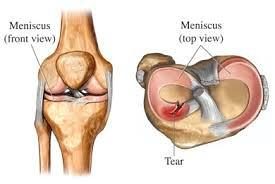The surgical approach: Removes the torn parts of the partial meniscal tear in the attempt to alleviate pain.
The challenge: Important shock-absorbing/guidance of the knee is removed from the body during surgery. Several studies show an increase in arthritis for patients with a history of meniscus removal. Recent studies report little benefit relief from meniscus tear surgery, especially in younger patients not suffering from arthritis. Ironically, the most common orthopedic surgery in the United States is partial meniscectomy.
The Physical Therapy approach: Sometimes the meniscal tear is small enough that it can be managed and a small portion of the medial posterior meniscus can heal due to having a sufficient blood supply. However, most meniscal tears require surgical intervention. Either way it’s imperative to get to a Physical Therapy program quickly. The goal is to do physical therapy until you get back to your previous normal level of activity. If a rehabilitation program is not proving effective for the presurgical meniscal tear then an Orthopedic consult will be requested. Most patients rehabilitation of their knee takes about four to six weeks, however, the level of injury will dictate the time it takes to rehabilitate. Whether it is presurgical or postsurgical Physical therapy focuses on decreasing the swelling and providing an optimal environment for the knee to heal. The next step is regaining full range of motion, which helps relieve knee pain, and then finally the strengthening phase of your ankle and all of the surrounding musculatures of your core, hip, and knees.

